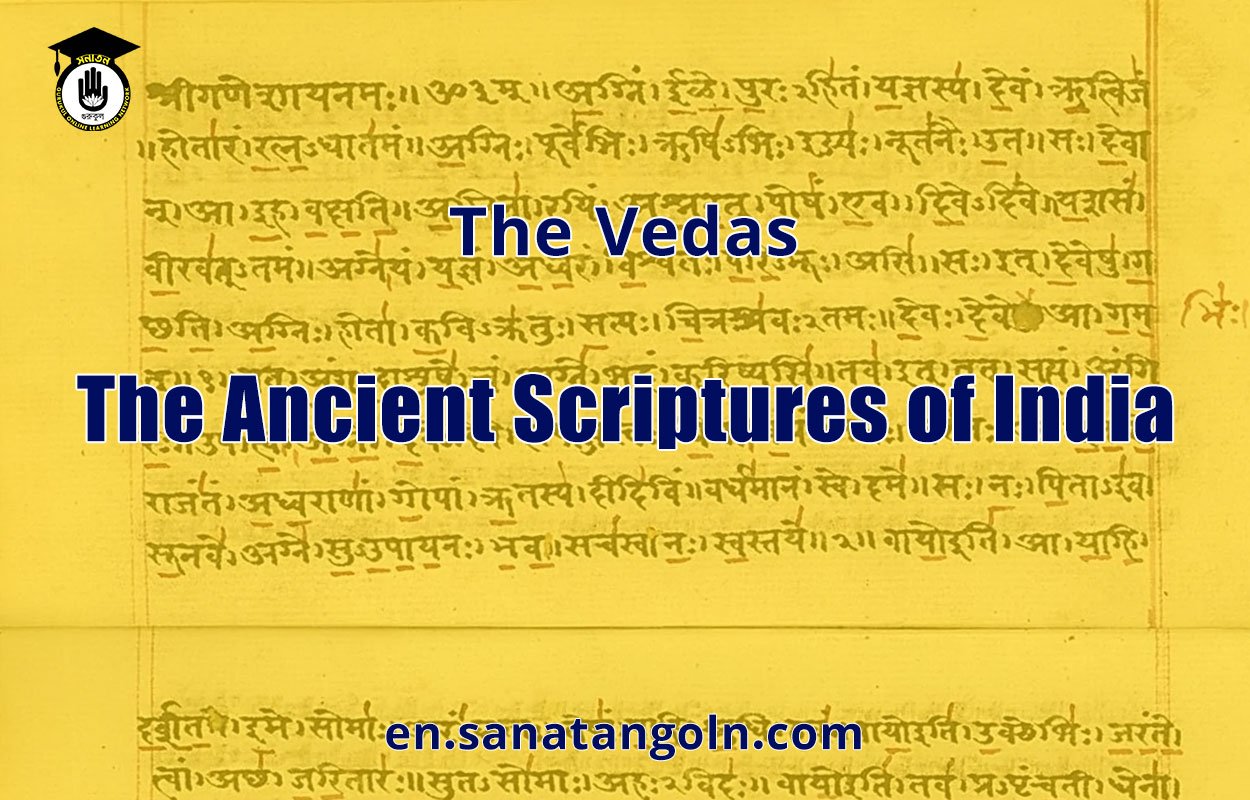The Vedas, often regarded as the oldest scriptures in the world, are a vast collection of religious and philosophical hymns and rituals that form the foundation of Hinduism. They are considered by Hindus to be the ultimate source of knowledge and spiritual truth. This article delves into the history, composition, significance, and teachings of the Vedas.
The Vedas

1. Historical Background
The term “Veda” is derived from the Sanskrit verb ‘vid’, which means ‘to know’. Thus, the Vedas can be translated as “knowledge” or “wisdom”. They were composed over a period of many centuries, beginning as early as 1500 BCE or possibly earlier, during the Vedic period in ancient India.
The Vedas were transmitted orally for several centuries before being put into written form. This oral tradition ensured that the hymns and rituals were preserved in their most authentic form. The Brahmins, or the priestly class, played a crucial role in this oral tradition, memorizing the Vedas and ensuring their accurate transmission to successive generations.

2. Composition of the Vedas
The Vedas consist of four main collections:
- Rigveda: The oldest of the Vedas, the Rigveda is a compilation of hymns praising various deities. It consists of 1,028 hymns divided into ten books or mandalas.
- Samaveda: Derived largely from the Rigveda, the Samaveda is a collection of melodies and chants used by priests during rituals and sacrifices.
- Yajurveda: This Veda focuses on the rituals associated with sacrifices. It provides details about the procedures, the chants, and the mantras required during sacrificial rites.
- Atharvaveda: Different in character from the previous three Vedas, the Atharvaveda contains spells, charms, and magical incantations, addressing everyday concerns like health, love, and prosperity.
Each Veda is further subdivided into four parts:
- Samhitas: These are the hymns or mantras.
- Brahmanas: Prose texts that explain the hymns and provide details for the correct performance of rituals.
- Aranyakas: Regarded as a bridge between the Brahmanas and the Upanishads, the Aranyakas discuss meditation and provide a spiritual interpretation of rituals.
- Upanishads: Philosophical texts that explore the concepts found in the Vedas in greater depth, focusing on meditation, morality, and the ultimate reality (Brahman).

3. Philosophical Teachings and Concepts
The Vedas encapsulate a plethora of philosophical teachings and concepts. Some of the pivotal ideas include:
- Rta: This concept refers to the natural order or cosmic order. It embodies the principle that everything in the universe operates harmoniously according to a set pattern or law.
- Dharma: Often translated as duty or righteousness, dharma is a complex term that refers to one’s responsibilities and obligations in life, ensuring harmony in society and the universe.
- Samsara: This represents the cycle of birth, death, and rebirth. The soul is believed to undergo several births until it attains moksha, or liberation from the cycle.
- Karma: It refers to the law of action and reaction. Every action, good or bad, has consequences that one must face either in this life or the next.
- Moksha: The ultimate goal of human existence, moksha, is liberation from the cycle of samsara. It represents the merging of the individual soul (Atman) with the universal soul (Brahman).

4. Significance of the Vedas
The Vedas play a central role in Hindu philosophy, ritual, and daily life:
- Spiritual Guidance: The Vedas provide spiritual guidance, helping individuals understand their place in the cosmos and their relationship with the divine.
- Rituals and Sacrifices: Many Hindu rituals, ceremonies, and festivals trace their origins to the Vedas.
- Societal Structure: The Vedas also delineated the varna system, which divided society into four main classes – Brahmins (priests), Kshatriyas (warriors and rulers), Vaishyas (traders), and Shudras (laborers).
- Source of Art and Science: The Vedas are not just religious texts. They encompass various fields of knowledge, including mathematics, astronomy, medicine, and music, offering a comprehensive view of ancient Indian society and culture.

5. The Upanishads and the Rise of Vedanta
While the earlier portions of the Vedas focus on rituals and hymns, the Upanishads, which form the concluding part of each Veda, delve deep into philosophical discussions. These texts seek to answer fundamental questions about human existence, the nature of the universe, and the ultimate reality.
The Upanishads gave rise to Vedanta, one of the six orthodox schools of Hindu philosophy. Vedanta, meaning “the end of the Vedas,” concentrates on the philosophical teachings of the Upanishads, particularly the nature and relationship between Atman (the individual soul) and Brahman (the ultimate reality).

6. Preservation and Continuation of Vedic Traditions
Given their sacred status, meticulous methods were developed to ensure the precise pronunciation and intonation of Vedic hymns. Various techniques, like the use of mnemonic devices, were employed to preserve the integrity of the Vedas through oral transmission.
Today, many Vedic traditions continue to thrive. The chanting of Vedic mantras remains an integral part of Hindu ceremonies, from birth to death. Vedic schools, or gurukuls, still exist in parts of India, where students, known as brahmacharis, memorize and recite the Vedas, ensuring their preservation for future generations.

7. Conclusion
The Vedas are not just religious scriptures but a vast reservoir of knowledge that offers insights into various aspects of life, from the mundane to the profound. They reflect the intellectual and spiritual achievements of ancient Indian sages and remain an enduring symbol of India’s rich cultural and philosophical heritage.
Over the millennia, the Vedas have influenced numerous thinkers, both in India and abroad. Their teachings, which encompass themes of unity, order, and the interconnectedness of all life, have universal relevance, offering wisdom and guidance in an ever-changing world.
See more:
